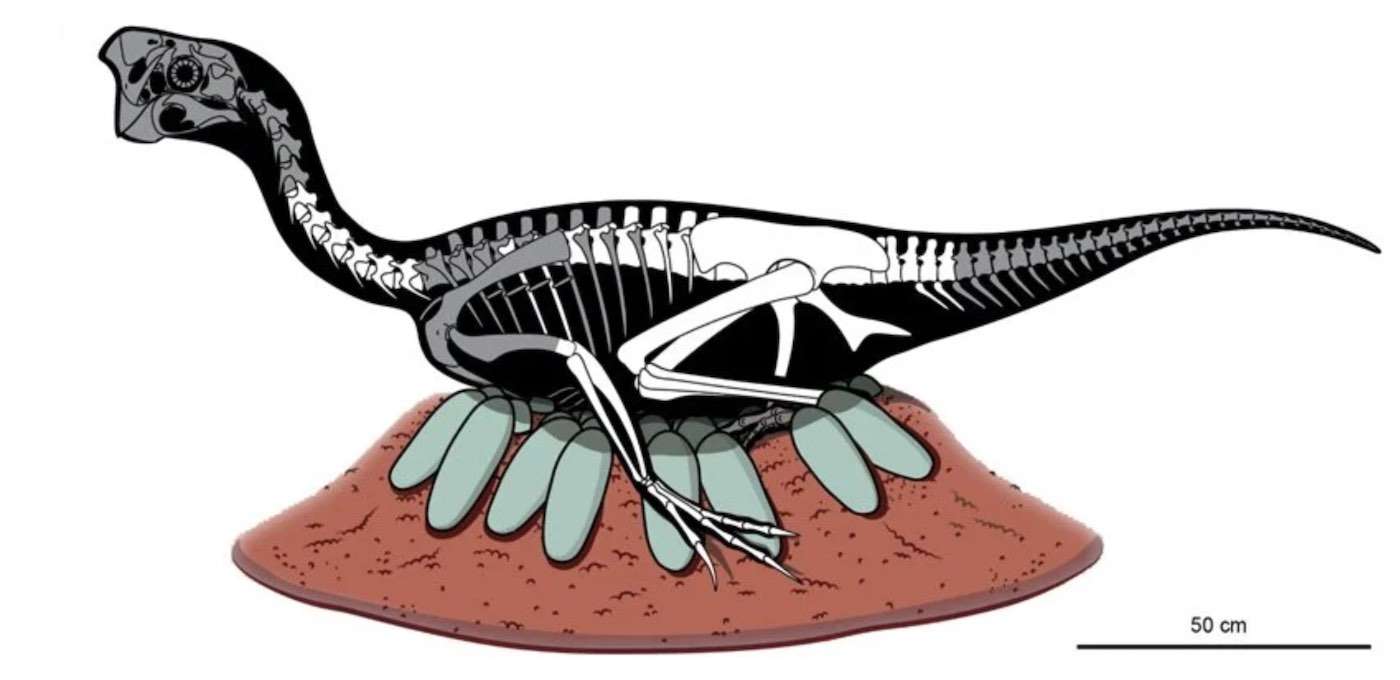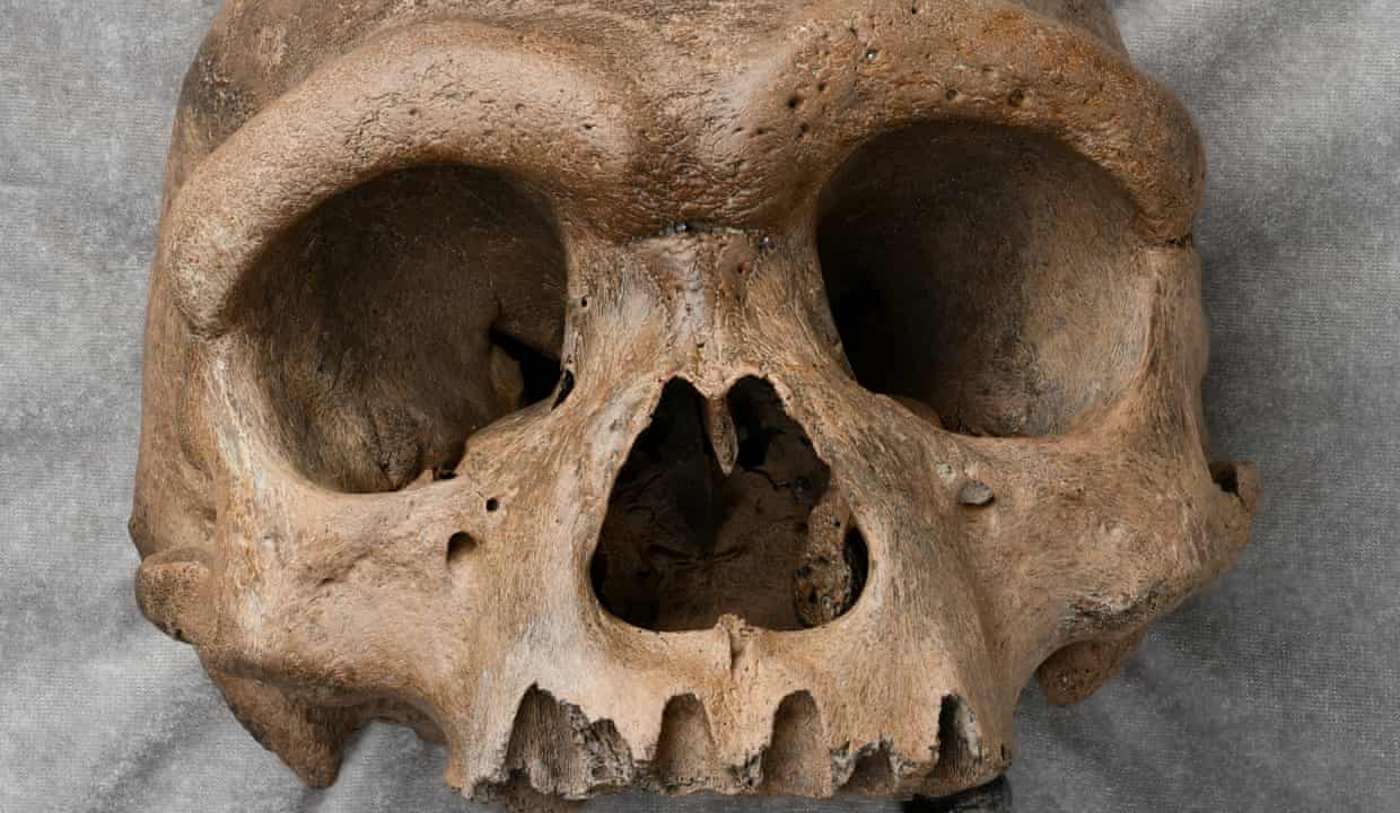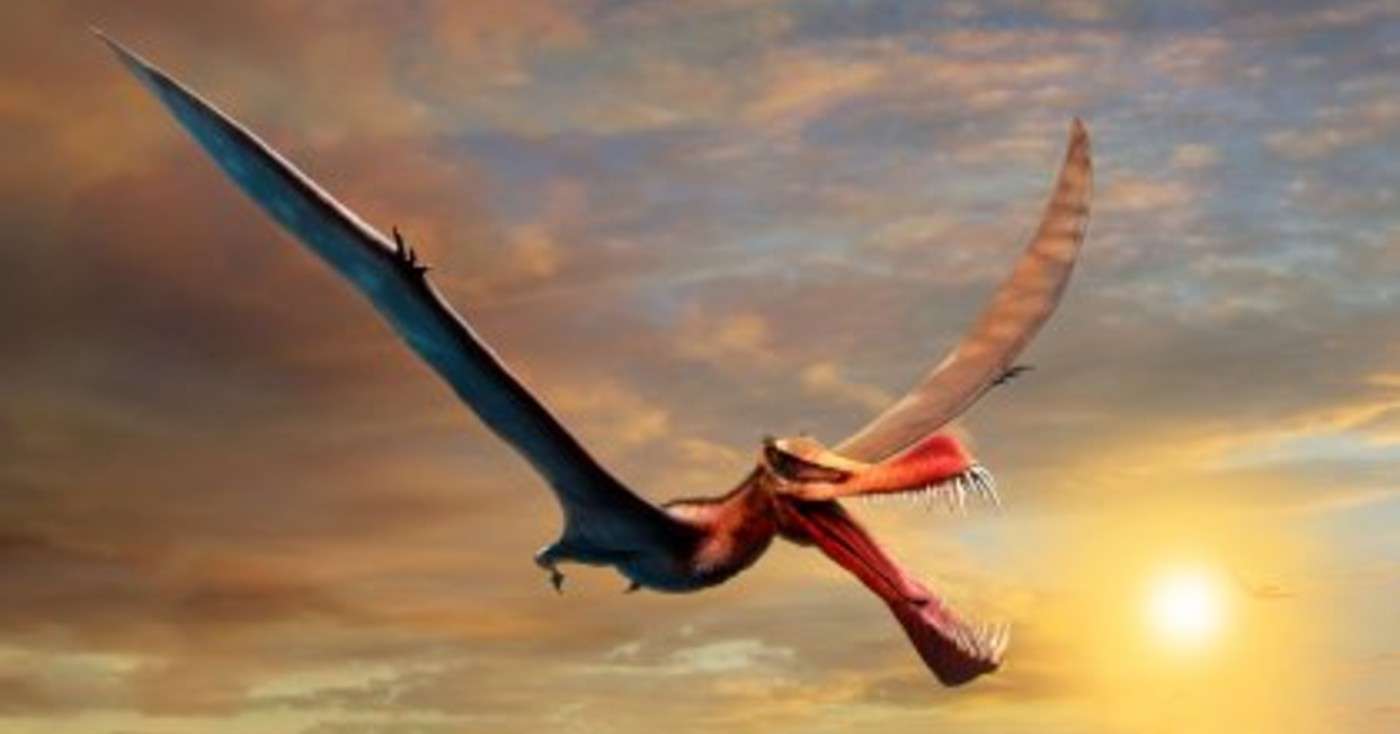A jaw-dropping fossil has been found of an oviraptor crouching upon two dozen eggs containing fossilized embryos inside—with 7 containing "babies" mere hours from hatching.
Found in Ganzhou in South China, the fossil is unprecedented in history, and not only contains an image of the animal and its offspring, but of its very behavior.
China has produced some of the world's most important discoveries in the field of paleontology, and this oviraptorosaur, from a group of bird-like theropod dinosaurs that thrived in the Cretaceous Period, turned out to be an absolute diamond.
China's soils contained the first specimens that linked dinosaurs to birds and the first evidence of tree-dwelling dinosaurs. The new fossil discovery seems to confirm that this species was one which broods—sitting atop its eggs as a method of incubation.
"This kind of discovery—in essence, fossilized behavior—is the rarest of the rare in dinosaurs," says paleontologist Matt Lamanna from the Carnegie Museum of Natural History (CMNH).
"Though a few adult oviraptorids have been found on nests of their eggs before, no embryos have ever been found inside those eggs."
The lack of contextual evidence so far had prevented paleontologists from being able to be sure that, birds, as far back as their ancestors 70 million years ago, always incubated their young, but several factors in this find lead to that conclusion being very likely.
Preserved with only a few millimeters of space between fossilized bone and eggs, almost no sediment has managed to squeeze in between, suggesting the dinosaur parent was incubating them.
Furthermore, the oxygen isotopes measured in the embryos put their temperature at about the same as the ones from the bones of the parent.
"This dinosaur was a caring parent that ultimately gave its life while nurturing its young," explains Lamanna, who was on the research team with primary authors Drs. Shundong Bi, from Indiana University of Pennsylvania and Xing Xu, paleontologist at the Institute of Vertebrate Paleontology and Paleoanthropology in Beijing. Their study was published in the Science Bulletin, with CMNH scientific artist Andrew McAfee producing illustrations for the paper.
Other interesting discoveries were the presence of complete dinosaur skeletons inside the egg material, evidence of the oviraptors' diet, and the fact that not all of the eggs were incubated to the same stage of development—another hallmark of birds.
Synchronous hatching is hard work, and in the avian order it's done with the help of both parents alternating incubation duties. It's thought to have originated much further down the evolutionary line, as today it is a behavior demonstrated in only a few certain birds.
Oviraptor may have moved away from simultaneous hatching much earlier than scientists expected. The sex of the fossilized oviraptor is not yet confirmed, and will offer a lot to the mystery.
In the stomach of the dinosaur, small stones were clues for determining the content of its diet. Today, birds, like turkeys, have gizzards, a primitive organ that stores gravel, allowing the bird to pass seeds and other hard or fibrous material through them to aid in digestion.
"It's extraordinary to think how much biological information is captured in just this single fossil," says paleontologist Xing Xu from the Institute of Vertebrate Paleontology and Paleoanthropology in Beijing.
"We're going to be learning from this specimen for many years to come."
SHARE This Breakthrough Discovery With Your Brood on Social Media…










Be the first to comment